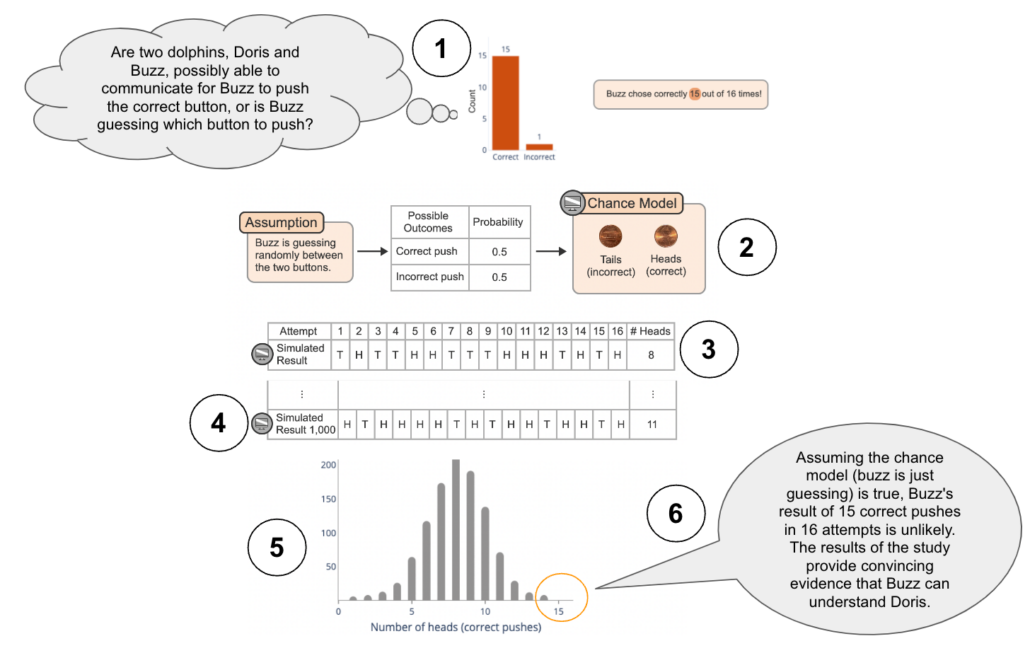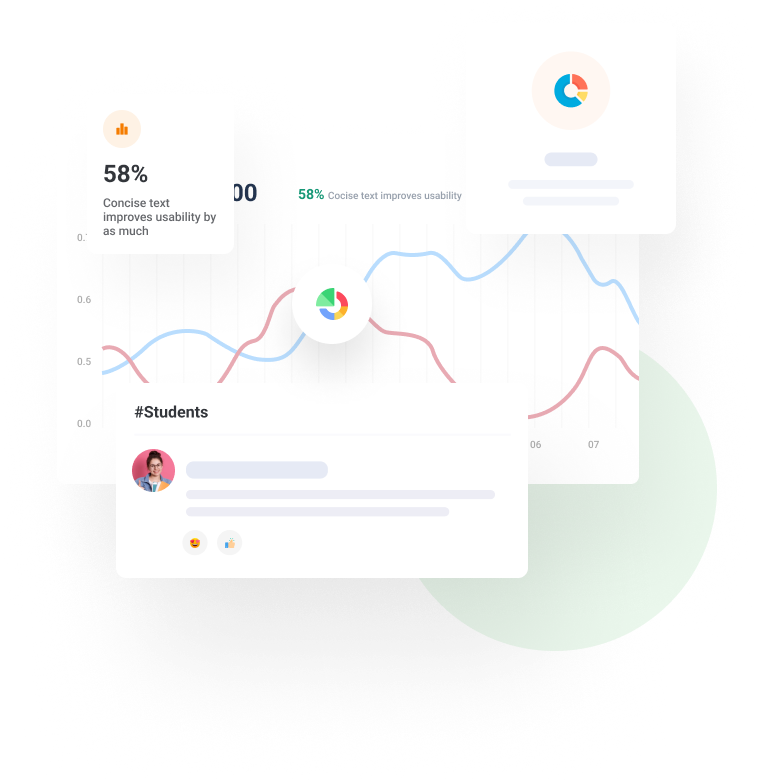Teaching Statistics with Simulation-Based Inference
Finding effective ways to teach complex statistical concepts is crucial for student success. Simulation-Based Inference (SBI) is an approach I’ve incorporated into my courses to meet this challenge. You should put it to work in your classroom, too.
In this post:
What is Simulation-Based Inference?
SBI vs traditional approach to teaching statistics
SBI for introductory statistics courses
Teaching the SBI and traditional approaches together
SBI’s impact on student engagement and interest
How to use SBI in your classroom: tips for instructors
Conducting a simulation for SBI
Bringing statistics to life
SBI in action
As an experienced statistics instructor, and now a statistics content developer here at zyBooks, I’ve found that SBI empowers students to explore, ask questions and intuitively grasp concepts in a way equation-heavy traditional approaches simply don’t. And, it’s a fun and engaging way to learn!
What is Simulation-Based Inference?
Simulation-based inference is a modern approach to teaching statistics that focuses on simulations to draw inferences about real-world phenomena. By engaging with interactive simulations, SBI helps students better comprehend foundational concepts like sampling variability and the role of chance in statistical inference. Key features of SBI:
- Focuses on real-life scenarios
- Uses simulations to understand statistical concepts
- Highlights conceptual understanding over formulas
- Emphasizes hands-on learning and intuitive understanding
- Promotes a better comprehension of key concepts
The goal of SBI is to provide students with an immersive environment where they can practice real-world problem solving, decision-making and critical thinking skills in statistics.
SBI vs the traditional approach to teaching statistics
The traditional approach to teaching statistics relies on mathematical modeling, equations and formulas, and theories. While these tools are foundational to statistical analysis, it’s often challenging for students to grasp a conceptual understanding of statistical inference. Your students might figure out, say, how to find a p-value from a table or software, but not fully understand the ideas behind the result.
SBI, on the other hand, offers an engaging learning experience, helping students to visualize the process and connect with the material intuitively. This hands-on approach promotes better comprehension of key concepts, allowing students to figure out the fundamentals without becoming overwhelmed by complex equations.
SBI for introductory statistics courses
This intuitive method is particularly useful for introductory statistics courses, where students often struggle with basic statistical inference concepts.
Students may be challenged initially by the idea of a chance model or simulation in SBI, as it’s new and different. But after a bit of exposure they tend to grasp the process and recognize the link between simulation and an analysis task, like a hypothesis test or confidence interval, compared to the traditional approach.
“If students do a simulation and watch the results build up after 100 times or 1,000 times they will grasp an actual connection to the concepts, and begin to understand what is a likely or unlikely result”
Pamela Fellers
Teaching SBI and the traditional approach together
Traditional theories and formulas are key to statistical analysis, of course, so how do they fit in the SBI framework?
What I’ve done in my courses, and also in our statistics zyBooks, is teach them both – but always start with SBI.
Help students grasp foundational concepts through simulations and once they’re comfortable with these ideas, then introduce equations and calculations. Show them how both methods can reach similar results, or not. That will really help the light bulbs go off for your students.
Check out the video at the end of this post to see how I do this in practice.
SBI’s impact on student engagement and interest
I’ve seen a significant increase in engagement and interest among students when I added SBI into my classroom. They became more intrigued with statistics when they had the chance to design simulations and explore questions, rather than just do calculations.
I especially found great value in hands-on activities, such as shuffling cards or flipping coins, to build up distributions and create a more immersive learning experience. Giving students a tactile experience can help them better understand the material.
How to use SBI in your classroom: tips for instructors
Here are my recommendations for implementing SBI in your statistics courses:
- Practice and work with SBI yourself: Gain familiarity with the approach, as students will have many questions. Working with SBI will also help you connect the simulations to theoretical concepts.
- Choose the level of SBI integration: Instructors can either introduce SBI gradually with a few activities or adopt a full course resource that is primarily simulation-based.
- Give students a tactile experience: Provide activities where students can physically engage with the material, such as shuffling cards, flipping coins, or rolling dice. This helps them connect with the concepts on a deeper level.
- Utilize technology: After giving students hands-on experience, introduce technology to enhance their learning. Show them how simulations can be run more efficiently using computer programs and apps.
Conducting a simulation for SBI
Conducting a simulation for SBI
- Define the question and the situation to simulate, or the chance model
- Design a way to simulate, or replicate, the situation/model (coin flips, card shuffles, applet, write code)
- Observe one replication of the simulation, and store key numerical summaries such as the observed count, proportion, difference, or mean
- Continue replicating and storing numerical summaries; 1,000 replications is usually sufficient
- Summarize the stored information; this typically involves examining an estimated sampling distribution
- Use the results to provide insight into the defined question/objective
Check out this example of a simulation process:

Resources for teaching with SBI
Simulation-Based Inference Blog
Rossman/Chance Applet Collection – a full suite of simulation applets
StatKey – another suite of simulation applets
Random.org – coin flips, dice rolls and list randomization; useful when you need a quick individual simulation
Bringing statistics to life
Traditional methods can often be intimidating, especially for students who aren’t naturally inclined towards mathematics. SBI, on the other hand, presents a more accessible way to engage with statistical concepts – it brings this discipline to life.
By introducing students to SBI early in their statistics education, you can better prepare them for advanced topics and applications. Simulation methods are also increasingly being used in various disciplines, such as biology and psychology, and familiarity with these methods will give students an advantage in their future studies.
SBI in action
Check out this video where I walk through how how we apply SBI here at zyBooks to tie concepts to traditional formulas and theories:









